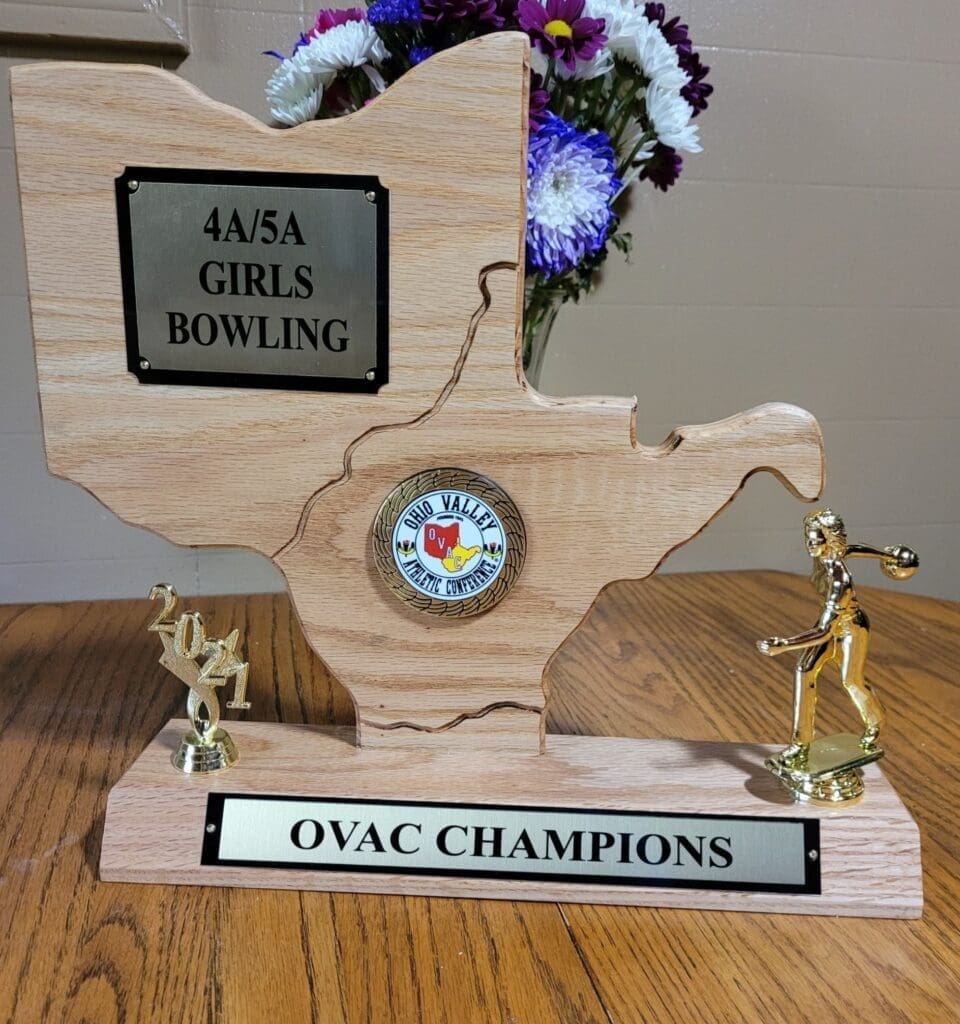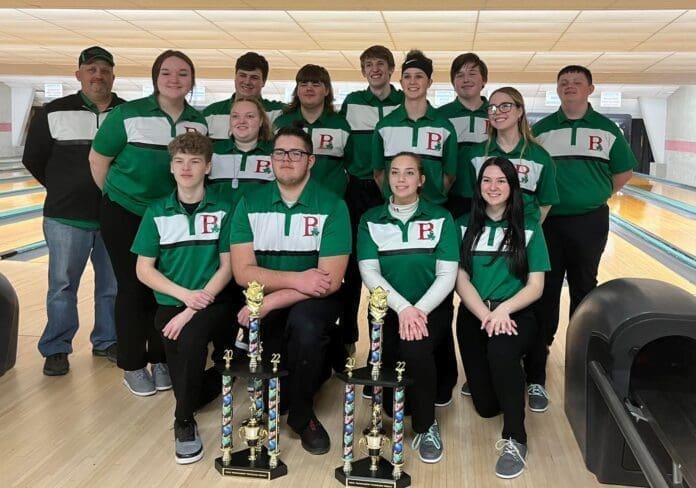(Publisher’s Note: This is the second in a three-part series taking a look at how bowling has evolved and continues to grow locally, particularly in Eastern Ohio. Parts II and III will take a look at how the growth of high school bowling has boosted the ranks of youth leagues and the bowling populace overall, while Part III will examine how two local bowling houses hope to take advantage of updated sports gambling laws in Ohio, as well as other options like live entertainment, to supplement their income and further add to their customers’ overall experiences.)
Local bowling centers are always looking for ways to drum up interest in new bowlers, not only to generate occasional bowlers but consistent, repeat ones that make the love of bowling a lifetime one.
The Ohio High School Athletic Association did lanes in Eastern Ohio and across the Buckeye State a huge favor back in the mid-2000s when they decided to make high school bowling an official sport.
The first OHSAA state singles, titles were first awarded in 2007, and when the 2023 honors are held in early March, it will mark the 17th edition of the state championships.
While locally high school bowling began with only a few teams in Belmont County and beyond, the interest, and more importantly participation in the sport, continues to grow.
“With high school bowling, it has improved the younger crowd coming into the lanes,” said A.J. Corder, owner of Chestnut Lanes in Barnesville. “The numbers in high school bowing have been phenomenal the last few years, with each year, new schools coming into the league.”
The OVAC finally jumped on board as enough schools in the conference fielded bowling teams and submitted a request for the conference to officially recognize both boys’ and girls’ bowling.
The first tournament took place in 2020, with the Harrison Central girls and Weir boys taking the respective team’s crowns. The following year, the OVAC had enough participation to split the championship tournament into 1A-3A and 4A-5A.
The Barnesville boys’ team won the small school crown, with Parkersburg South capturing the team banner for the bigger schools. On the girls’ side, Barnesville completed the team sweep, with East Liverpool capturing the big school crown.
Last season, it was Conotton Valley sweeping the small school championships, while the Potters’ girls repeated, with Weir returning to take the boys’ crown back from South.
The first OVAC crowns were handed out inside St. Clair Lanes, with Parkersburg hosting last season’s championships.
“We are picking up teams left and right and (Executive Director) Dirk Decoy with the OVAC has done a fantastic job, and we’re very lucky to have them promoting bowling,” St. Clair Lanes Gary Holubeck said.
St. Clair Lanes has also played host to the Buckeye 8 bowling championships, along with OHSAA postseason action.
There are 22 schools offering bowling and are officially part of the OVAC with more to come on board. While West Virginia doesn’t officially sanction high school bowling yet as its Ohio counterpart does, locally, the number of Mountain State schools joining the bowling ranks is growing.
Currently, Linsly, Parkersburg South, Weir, and Wheeling Central field both boys’ and girls’ teams. Wheeling Park and John Marshall appear close to joining the ranks.

How Does it Help?
But how exactly do the bowling houses benefit from the rise of high school bowling?
For one, there’s an increase in interest, not only in high school-aged bowlers but in the youth leagues as well. High school sports are a major fixture in the Ohio Valley, and younger athletes now see another avenue to compete upon reaching high school.
This in turn leads to an increase in youth leagues, which in a way can act like rec-league and junior high programs, teaching the sport and preparing young bowlers for high school. In fact, some middle schools are looking to or have already started fielding their own teams.

“You have schools starting junior high school level teams now,” Corder said.
“The junior programs benefit as well,” Holubeck concurred.
“Some of the schools are starting feeder programs at the junior high level because they want their teams to be competitive come high school,” Holubeck said. “They are coaching and getting them familiar with the finer points of the game as some have never bowled before and are just getting into it.”
Teams and individuals are practicing more, purchasing their own equipment, and getting involved at an earlier age he said. Bowlers, like any other athlete, like winning. So anything that can be done to get in another game of practice, or finding that perfect bowl, bowlers, and their parents, are out looking.
Corder noted Chestnut has also sported a popular junior league, and that was before the fire took down Chestnut Lanes back in 2020. Then, Corder’s junior league sported 15 teams of five bowlers. Now, with the rebirth of Chestnut Lanes and its reopening back in May, he’s thinking it’s going to be even bigger.
“We have 15 teams of five for Fridays after school, and we’re expecting that number to increase with the new place,” Corder added.
There’s also the in-season benefits. Like every other team sport, OVAC bowlers need a place to practice, and that means hitting the local bowling house to get some lane time.
Barnesville’s team, which called St. Clair Lanes its home away from home the last two years, can resume to practicing back in Shamrock Country. The ‘Rocks tend to practice Tuesday through Thursday and quite literally take up the entire alley.
“With the numbers Barnesville has, it’d be tough for us to add another school,” Corder said when asked if any other area teams had inquired about practice time at Chestnut. “We have matches on Monday, then practice Tuesday through Thursday and junior league on Friday.”
Barnesville’s boys’ varsity takes up lanes one and two, the jayvee on three and four, the girls’ varsity on five and six, with the reserves on the final two at seven and eight. That literally leaves no room for anyone else.
That’s why a number of schools call St. Clair Lanes home, given the number of available lanes for practice, especially right after school.
“We like to hold practice right after school,” Holubeck said. “Our leagues don’t get started until the evening, so there’s always that little window where we are never busy.
“The kids get here for a 3:30 time slot, and the parents can come and watch after work. It works really well for us, the schools, and the parents. It keeps it easy.”

Benefits Beyond
The hope is that by building a groundswell of interest among youth bowlers that carries into the high school leagues, eventually, it will lead into an overall increase in the adult leagues.
Someone who has bowled for their school team competitively for four years—perhaps longer if on the junior high level—is more likely to build a true love for the game and want to continue competitive bowling after graduation.
That’s where the adult leagues can fill that void.
“We see a big benefit during in-season, November through February, and open bowling picks up too. Some of the (high school) bowlers will come out with their families, and we are seeing more kids graduate to the adult leagues,” Corder said.
Corder also knows that signing up is a big time commitment as league bowling can run 30-plus weeks, and not everyone is willing to agree to that length of undertaking.
“It’s a huge commitment. You’ve got to love the game to put in that type of commitment,” Corder said. “But even with adults, it’s not just about the game. You get to meet people, make friendships, and form bonds. There’s more to the experience of joining a league than just bowling.”
Camaraderie is a big part of bowling, not only amongst teammates but also opponents. It’s a unique sport in that while you are part of a team, it’s very much an individual sport. There’s no defense, so you see opponents root for one another more than against.
“You get to get out and socialize with friends and enjoy each other’s company,” Holubeck said. “It’s not like my team vs. your team. You can root for each other to throw strikes, because that makes it more exciting.”
Speaking of competitiveness, Holubeck noted that with more West Virginia schools coming on board with the OVAC, he’s looking at bringing together graduating seniors for a West Virginia vs. Ohio style competition, similar to the other OVAC All-Star events held each season.
“We’re working on getting it going, just like they do with football and basketball,” Holubeck said. “We’ll get the top bowlers together, and hopefully we can it figured out soon.”


